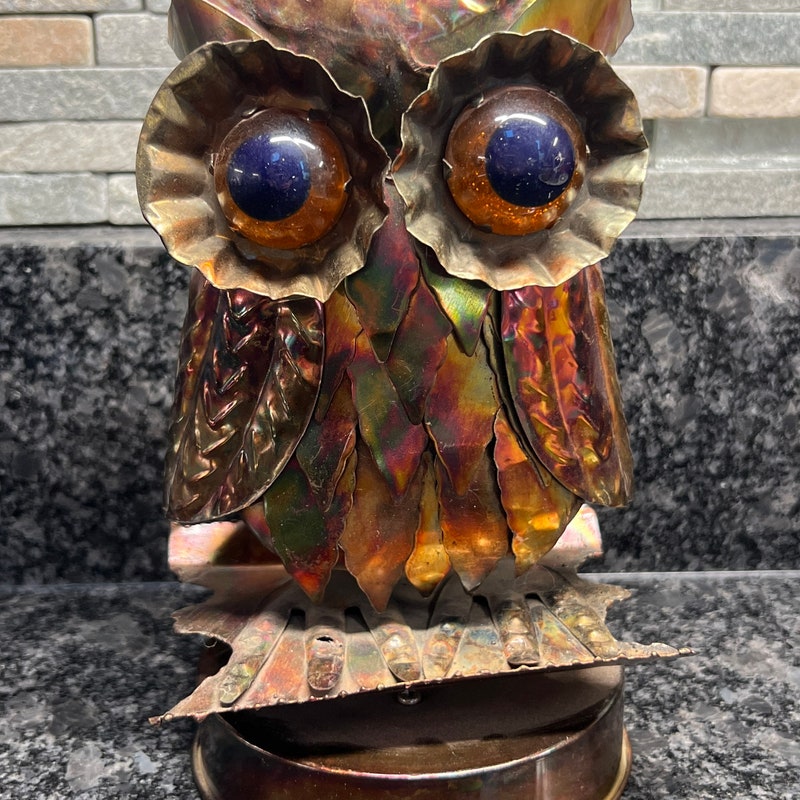Ever found yourself gazing into the beady eyes of a ceramic owl, perched precariously on a shelf, wondering just how this avian archetype infiltrated the design zeitgeist of the 1970s? The era, a veritable cornucopia of shag carpets, macramé, and avocado-colored appliances, also witnessed the ubiquitous proliferation of owl-themed paraphernalia. Navigating this hootenanny of collectables can be daunting; discerning a genuine vintage piece from a modern-day simulacrum requires a discerning eye and a comprehensive understanding of the era’s design sensibilities. This guide aims to equip you with the requisite knowledge to embark on a fruitful quest for prime examples of 1970s owl kitsch.
I. The Owl’s Ascent: Contextualizing the Phenomenon
Before delving into specific collectibles, it’s imperative to understand why the owl became such a prevalent motif. The 1970s were marked by a burgeoning interest in nature, spirituality, and folklore. The owl, often associated with wisdom, mystery, and nocturnal realms, resonated deeply with these emerging cultural trends. The symbolism of the owl, transcending mere decoration, became entwined with aspirations for knowledge and connection with the natural world. The owl’s cultural cachet was amplified by its widespread use in advertising and popular culture, solidifying its status as a quintessential emblem of the decade.
II. Categorizing the Hootenanny: A Taxonomic Approach
The sheer variety of owl-themed artifacts from the 1970s necessitates a system of categorization. We can broadly classify them based on material, function, and artistic style.
A. Ceramic Owls: These are perhaps the most common and readily available. Ranging from diminutive figurines to sizable planters, ceramic owls offer a diverse spectrum of glazes and embellishments. Look for examples with earthy tones, hand-painted details, and distinctive textural elements such as faux wood grain or feather imprints. Hallmarks or maker’s marks can significantly enhance their collectibility.
B. Textile Owls: Macramé wall hangings, embroidered pillows, and crocheted afghans featuring owl motifs were staples of 1970s interior décor. The texture and artisanal quality of these pieces contribute to their appeal. Unearthing examples in pristine condition, free from staining or unraveling, is a crucial consideration.
C. Wooden Owls: Carved wooden owls, often rendered in a rustic or folk-art style, offer a tactile and earthy aesthetic. These pieces can range from small decorative objects to larger sculptural works. The type of wood, the level of craftsmanship, and the presence of original paint or finishes are key factors in determining their value.
D. Metal Owls: Metal owls, crafted from materials such as brass, copper, or aluminum, often served as decorative accents or functional objects such as bookends or candle holders. The patina and weight of the metal can provide clues to their age and authenticity.
E. Mixed-Media Owls: The 1970s witnessed a spirit of artistic experimentation, resulting in owl-themed creations that combined various materials. Examples might include owls adorned with beads, feathers, or found objects. These idiosyncratic pieces, reflecting the individual artistic vision of their creators, often command higher prices.
III. Discerning the Genuine Article: Authenticity and Condition
Distinguishing a legitimate 1970s owl from a contemporary reproduction requires a keen eye for detail. Look for telltale signs of age, such as crazing in ceramic glazes, wear on painted surfaces, and fading in textiles. Examine the construction and materials carefully; vintage pieces often exhibit a level of craftsmanship and attention to detail that is lacking in modern replicas. Researching common manufacturers and designers of the era can also aid in authentication. Condition is paramount. Pieces in excellent condition, free from cracks, chips, stains, or other damage, will invariably be more valuable.
IV. The Hunt: Where to Find Your Feathered Friends
Embarking on the quest for 1970s owl kitsch can be an exhilarating adventure. Flea markets, estate sales, antique shops, and online auction sites are all potential treasure troves. Cultivating relationships with antique dealers and attending specialized vintage markets can also provide access to rare and sought-after pieces. Patience and persistence are key; the most coveted owls are often discovered in unexpected places.
V. Beyond the Hoot: Display and Appreciation
Once you’ve assembled your collection, the challenge lies in showcasing it effectively. Consider grouping owls of similar materials or styles together to create a cohesive visual display. Experiment with different arrangements and lighting to highlight the unique characteristics of each piece. Integrate your owl collection into your existing décor, allowing it to complement and enhance your overall aesthetic. Remember, the true value of these artifacts lies not only in their monetary worth but also in their ability to evoke a sense of nostalgia and appreciation for the design sensibilities of a bygone era. The curated arrangement becomes a testament to your discerning eye and a celebration of the owl’s enduring allure.
